Abstract
One theory which seeks to explain the production of fibrous tissue in silicosis postulates the interaction of collagen precursors with polysilicic acid. This stage has been questioned because it is doubtful whether polymerized silicic acid is normally formed when quartz dissolves in aqueous media. A mechanism by which silicic acid may be polymerized in vivo has been demonstrated by studying the properties of polyamide monolayers, which behave like collagen monolayers when spread on silicic acid substrates. The silicic acid which is adsorbed beneath the monolayer polymerizes when the polyamide films are subjected to pressure.
In fibrogenesis, the polysaccharides which are produced in large amounts may serve to prevent the premature agglomeration of the collagen units. Later, when the concentration of the polysaccharide is largely reduced, the polysaccharide may assist in aligning and cementing the units together to form fibres. The physiological process is probably reversible but, if silicic acid takes the role of the polysaccharide in this second stage, the building up of fibres is likely to be an irreversible process.
Full text
PDF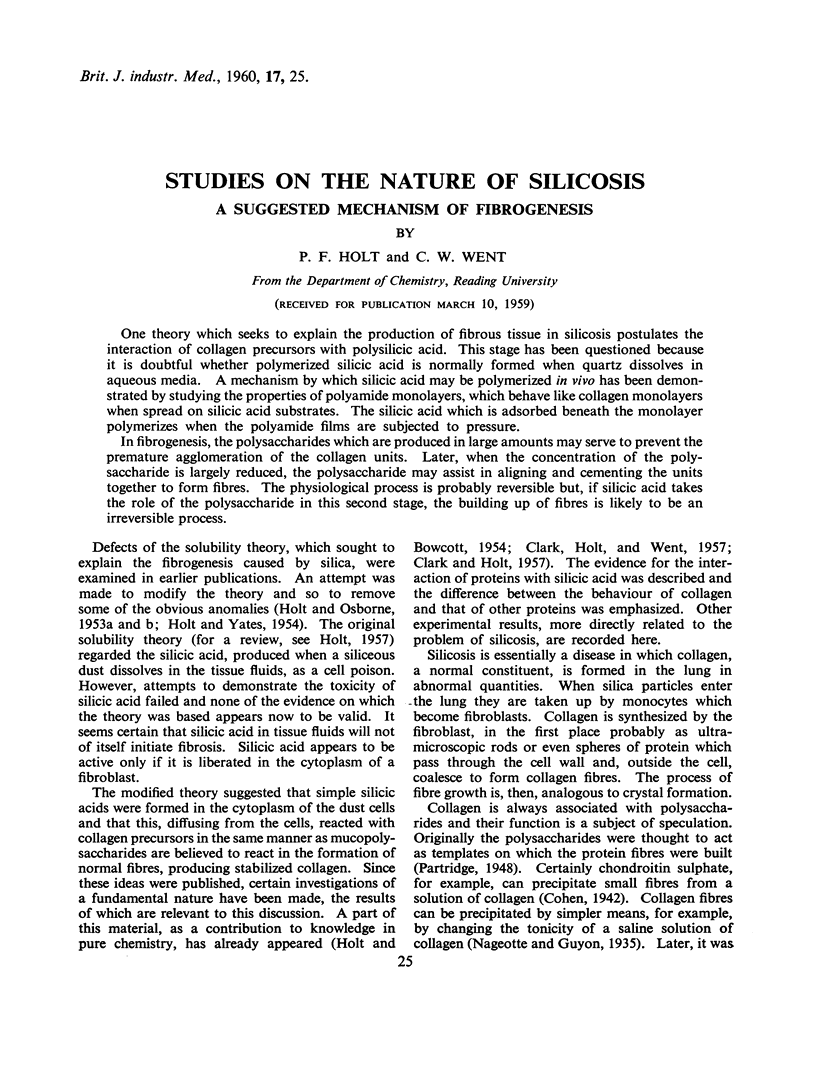
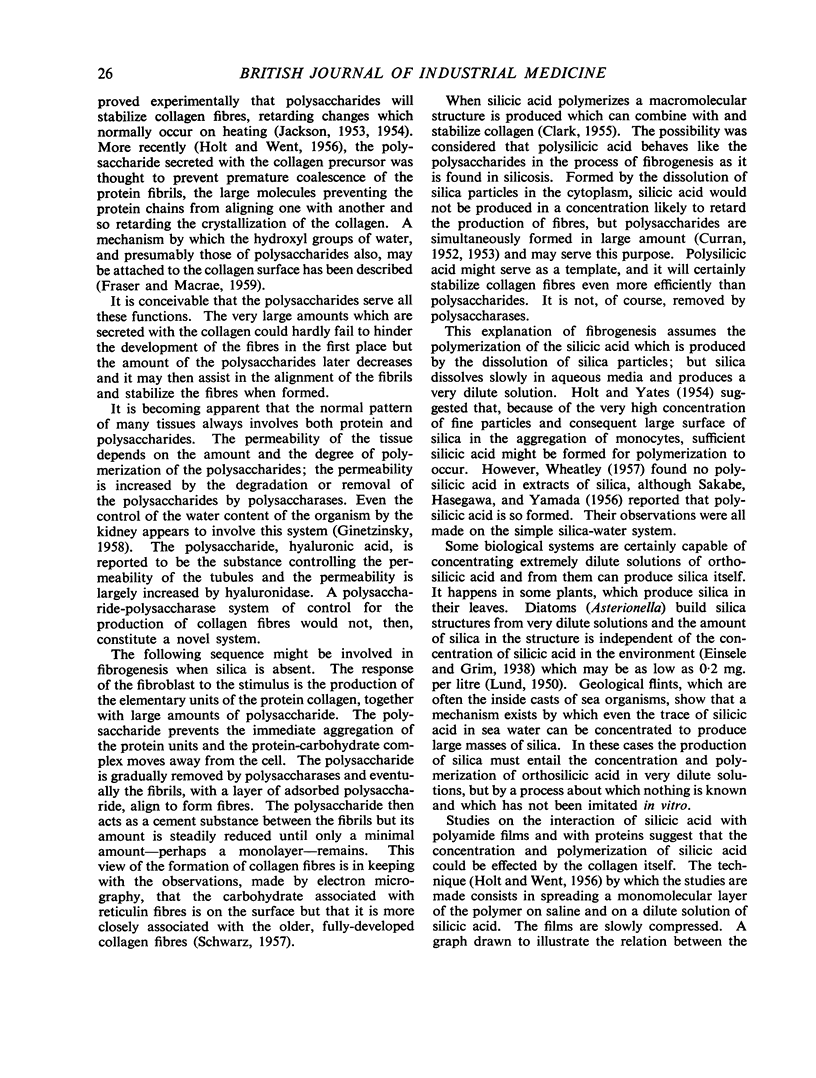
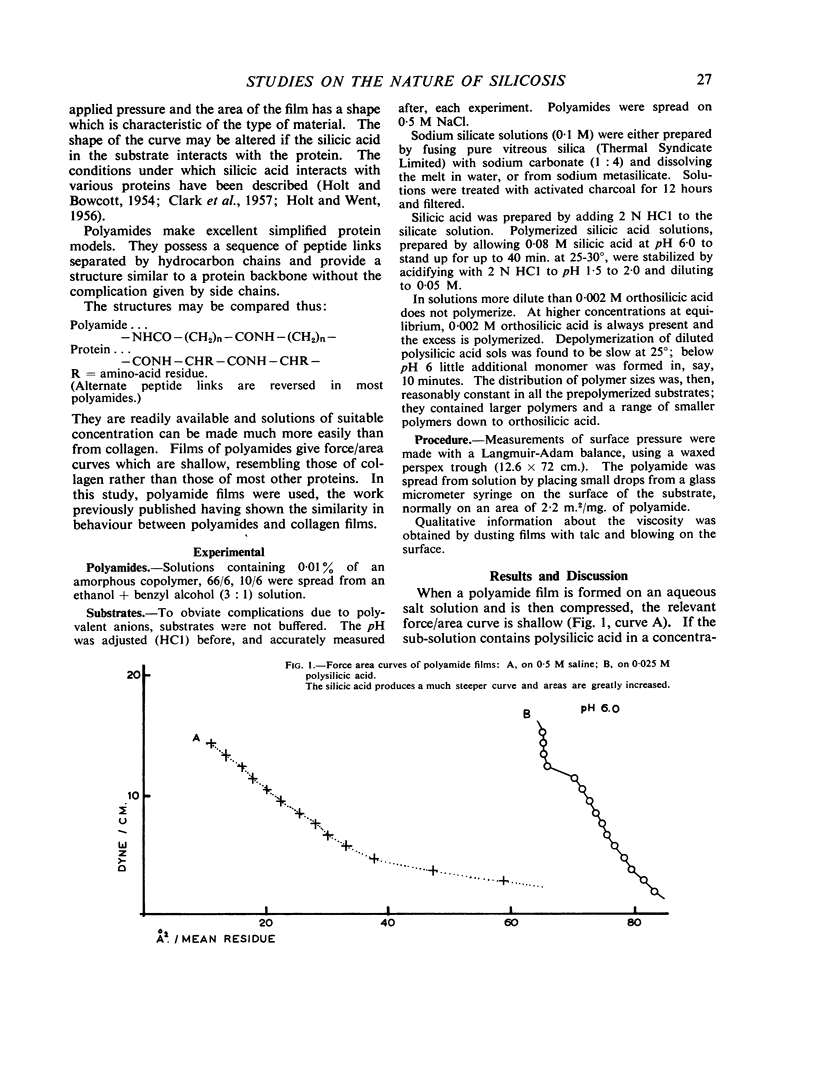
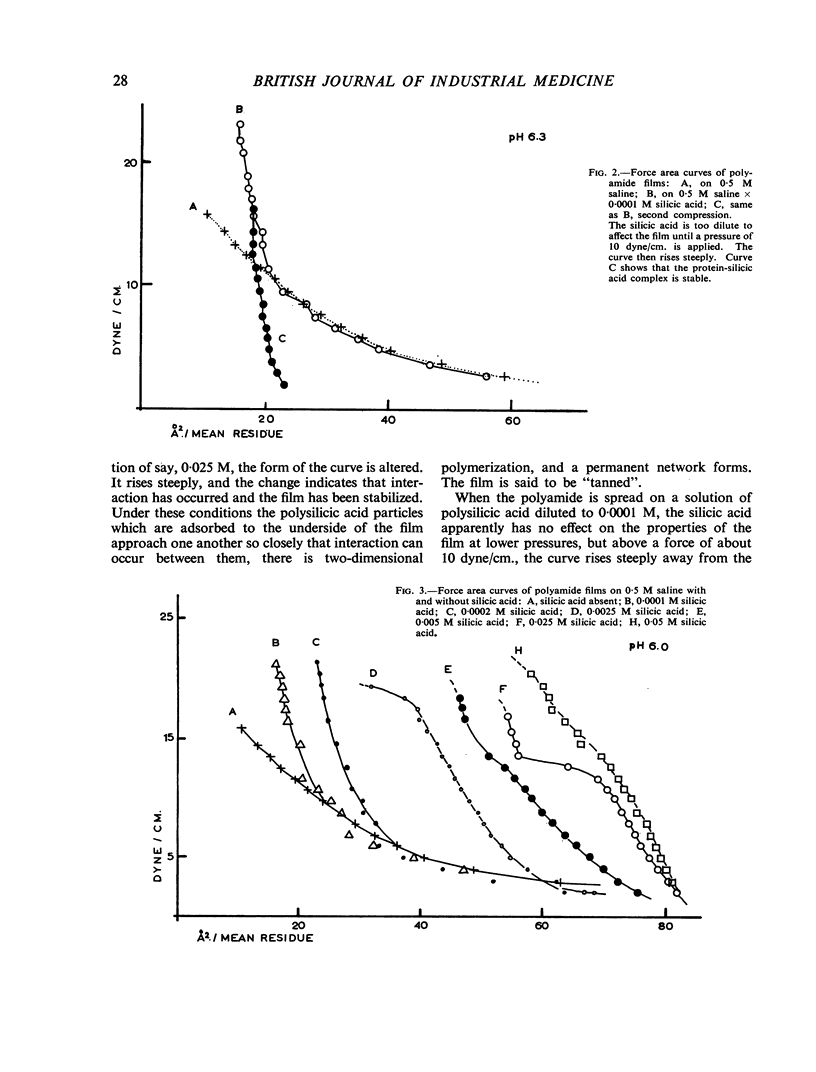
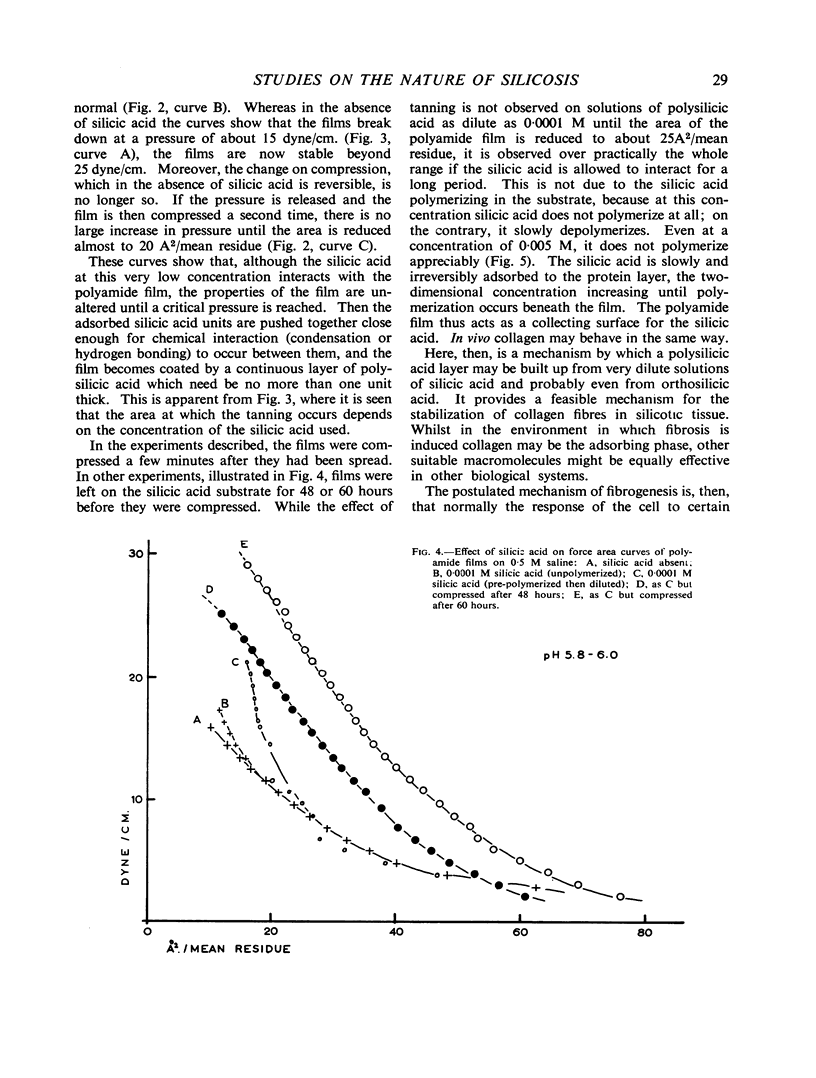
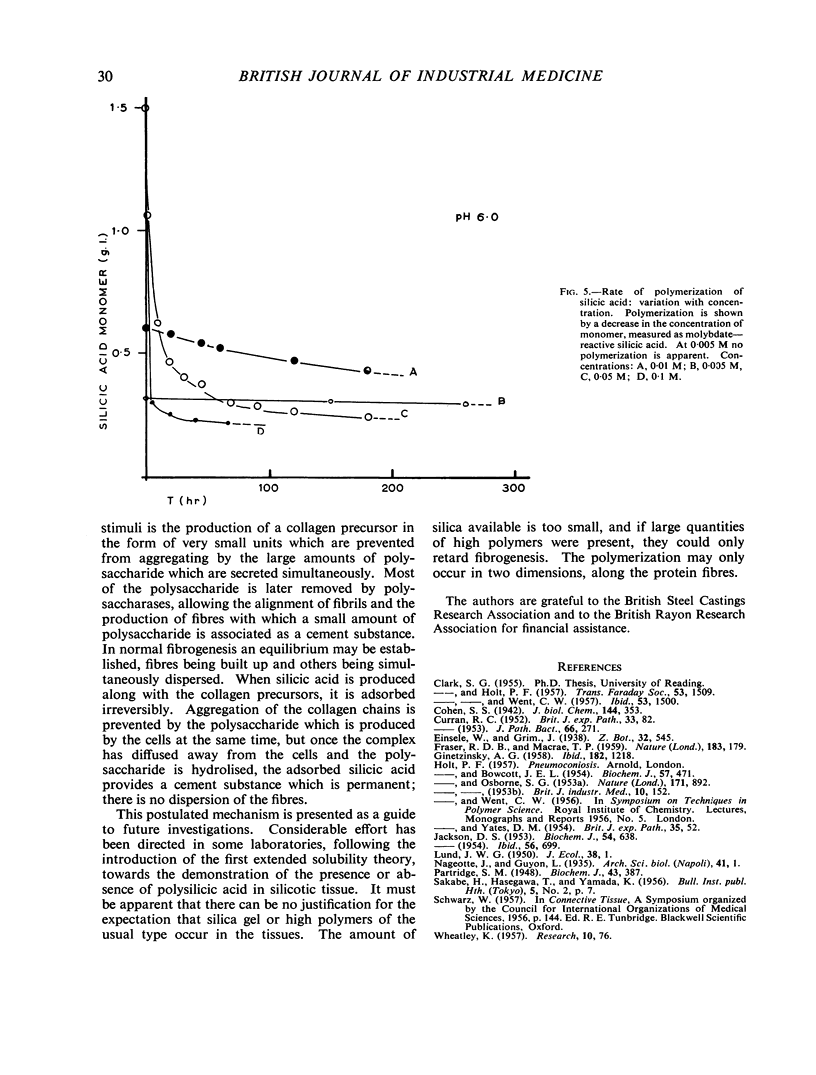
Selected References
These references are in PubMed. This may not be the complete list of references from this article.
- CURRAN R. C. The effect of cortisone on the reaction of the mouse peritoneum to quartz. Br J Exp Pathol. 1952 Feb;33(1):82–86. [PMC free article] [PubMed] [Google Scholar]
- FRASER R. D., MACRAE T. P. Possible role of water in collagen structure. Nature. 1959 Jan 17;183(4655):179–180. doi: 10.1038/183179a0. [DOI] [PubMed] [Google Scholar]
- GINETZINSKY A. G. Role of hyaluronidase in the re-absorption of water in renal tubules: the mechanism of action of the antidiuretic hormone. Nature. 1958 Nov 1;182(4644):1218–1219. doi: 10.1038/1821218a0. [DOI] [PubMed] [Google Scholar]
- HOLT P. F., BOWCOTT J. E. The interaction of proteins with silicic acid. Biochem J. 1954 Jul;57(3):471–475. doi: 10.1042/bj0570471. [DOI] [PMC free article] [PubMed] [Google Scholar]
- JACKSON D. S. Chondroitin sulphuric acid as a factor in the stability of tendon. Biochem J. 1953 Jul;54(4):638–641. doi: 10.1042/bj0540638. [DOI] [PMC free article] [PubMed] [Google Scholar]
- Partridge S. M. The chemistry of connective tissues. 1. The state of combination of chondroitin sulphate in cartilage. Biochem J. 1948;43(3):387–397. [PMC free article] [PubMed] [Google Scholar]


